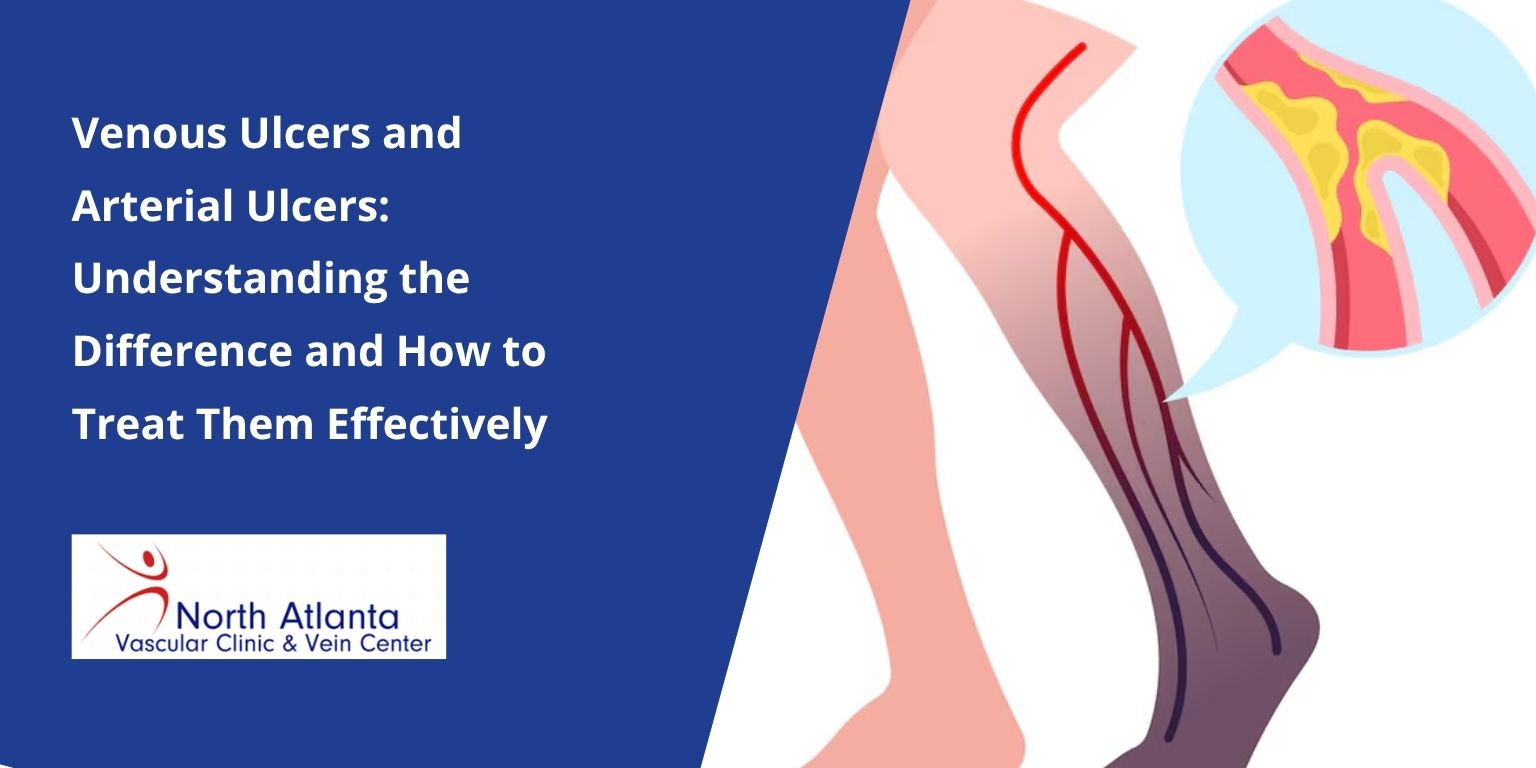



Leg ulcers are a common and distressing sign of underlying vascular disease. They can cause significant pain, discomfort, and impact a person’s mobility and quality of life. While venous ulcers and arterial ulcers may appear similar at first glance, they have distinct causes, characteristics, and treatment methods. Understanding these differences is crucial for effective diagnosis and management, helping to ensure proper care and treatment.
Chronic leg ulcers develop when the blood flow in the legs is impaired, often due to underlying conditions like poor circulation, diabetes, or venous hypertension. These ulcers may take a long time to heal and can often recur if the root cause isn’t addressed.
Understanding the difference between these two types of ulcers is critical in determining the right treatment. Left untreated, both types of ulcers can lead to severe complications.
Venous ulcers occur when venous hypertension causes blood to pool in the lower extremities. This condition is often a result of faulty vein valves that are unable to efficiently return blood to the heart.
Venous ulcers usually form near the ankle or lower leg, where blood tends to accumulate. These ulcers are typically shallow, moist, and surrounded by discolored or swollen skin. The skin around the ulcer may have a brownish color due to the buildup of hemosiderin (iron from broken-down blood cells).
People with venous ulcers often experience:
Arterial ulcers are caused by reduced blood flow due to peripheral artery disease (PAD) or atherosclerosis, conditions that lead to the narrowing or blockage of arteries. Without adequate oxygenated blood, the skin and tissues in the affected area suffer from poor circulation, resulting in the development of painful ulcers.
Arterial ulcers typically appear on the toes, feet, or other pressure points on the legs. These ulcers are deep, dry, and often have well-defined edges. They may be surrounded by pale or bluish skin, indicating a lack of proper blood supply to the area.
The pain associated with arterial ulcers is often:
Unlike venous ulcers, the pain from arterial ulcers generally does not improve with leg elevation and may continue to worsen until circulation is restored.
Knowing the differences between venous and arterial ulcers is essential for accurate diagnosis and treatment. Here’s a quick comparison:
It is important to seek professional care if you notice any of the following:
Venous and arterial ulcers, though they may appear similar, have distinct causes and require different treatment approaches. Venous ulcers are caused by venous hypertension and typically form around the ankle or lower leg, with pain alleviated by elevating the legs. In contrast, arterial ulcers result from restricted blood flow due to conditions like Peripheral Artery Disease (PAD) and are often deep and located on the toes or feet, with pain worsening upon leg elevation.
Treatment for venous ulcers generally includes compression therapy, leg elevation, and wound care, while arterial ulcers require careful management of circulation through procedures like angioplasty or bypass surgery. Early diagnosis and intervention from a vascular specialist are crucial to prevent complications and promote healing.
At North Atlanta Vascular Clinic (NAVC), we offer expert care for venous and arterial ulcers. Our specialists use advanced diagnostic tools and customized treatment plans to help you manage and heal leg ulcers effectively. Don’t let ulcers disrupt your life, schedule an appointment today to discuss your symptoms and receive a personalized care plan. Your health and comfort are our top priority at NAVC.